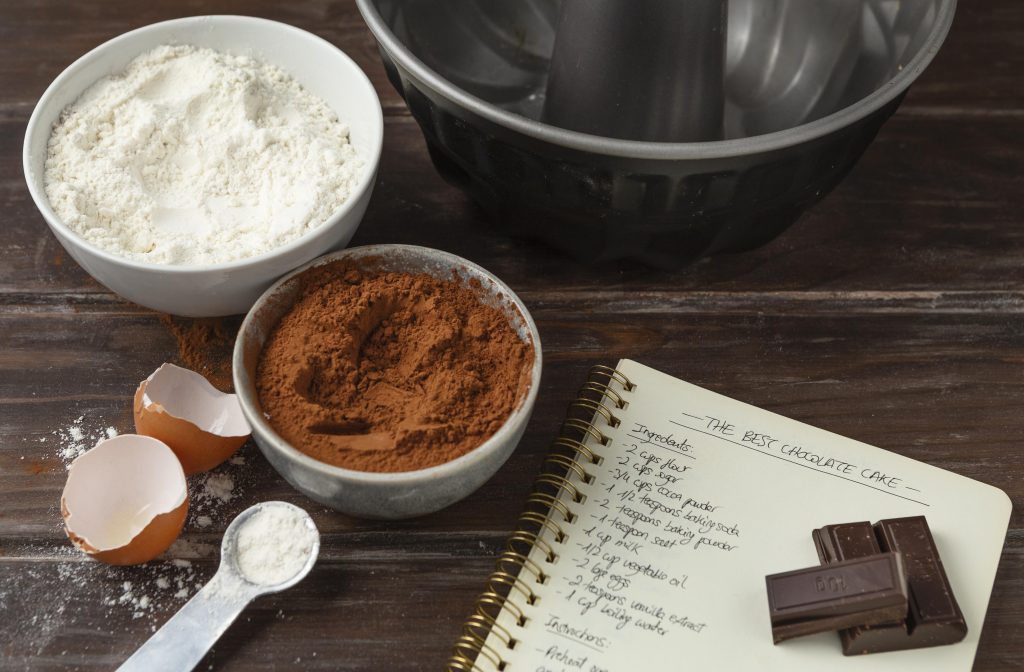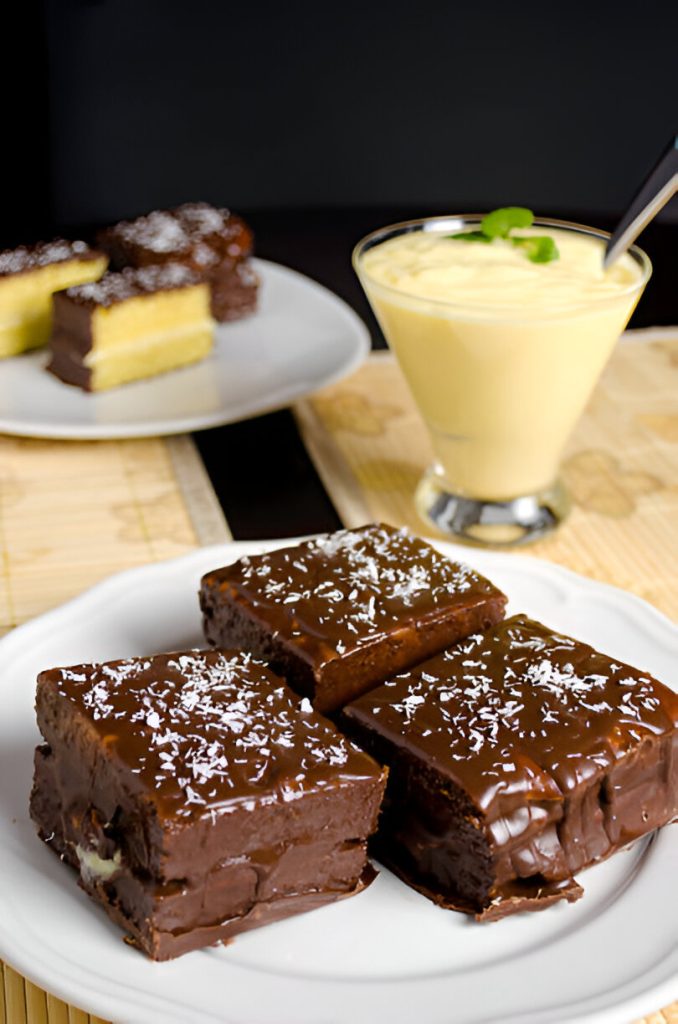Imagine yourself as a culinary artist, wielding cocoa powder as your paintbrush to create rich and velvety masterpieces. The allure of homemade chocolate beckons as you yearn to uncover the secrets of crafting this delectable treat from scratch. As you delve into the intricacies of chocolate making, you will unravel the mysteries behind achieving that perfect balance of sweetness and bitterness that defines a truly exceptional chocolate bar. Get ready to elevate your kitchen skills and tantalize your taste buds with the magic of turning cocoa powder into indulgent chocolate creations.
Essential Ingredients for Homemade Chocolate
To create delicious homemade chocolate, you need essential ingredients such as cacao butter, cocoa powder, and maple syrup. When considering flavor combinations, experiment with adding ingredients like sea salt, crushed biscuits, or even a hint of chili powder for a unique taste experience. Texture experimentation is key for perfecting your chocolate, so try incorporating nuts or dried fruits for added crunch or chewiness. Adjust sweetness levels to your liking by varying the amount of maple syrup used in the recipe. When exploring nut and fruit pairings, consider options like almonds, hazelnuts, or dried cranberries to complement the richness of the chocolate. For those seeking dairy alternatives, coconut oil can be used as a substitute for cacao butter, and coconut milk powder can offer a creamy texture without dairy. By customizing these elements, you can create a personalized chocolate recipe that suits your taste preferences perfectly.
Homemade Chocolate Making Process
For crafting homemade chocolate, the initial step involves carefully selecting and weighing the essential ingredients like cacao butter, cocoa powder, and sweeteners. To create a personalized chocolate experience, consider the following:
- Flavor Experimentation: Try different extracts like mint or almond for unique tastes.
- Ingredient Customization: Substitute cacao butter with coconut oil for dairy-free options.
- Texture Variations: Adjust the amount of cacao butter for smoother or firmer textures.
- Sweetness Balance: Tailor sweetness levels by modifying the sugar quantity to suit your taste preferences.
Customizing Chocolate With Add-Ins
After crafting your homemade chocolate with the essential ingredients, now let’s explore how you can enhance your chocolate creation by adding various ingredients for unique flavors and textures. When customizing your chocolate with add-ins, consider experimenting with flavor combinations to achieve a harmonious taste. Pairing ingredients like nuts, dried fruits, or spices can create unique and exciting flavor profiles. Additionally, texture experimentation can be achieved by incorporating different add-ins like crunchy nuts for a contrast to the smooth chocolate. To create a memorable chocolate experience, think about unique pairings such as sea salt with dark chocolate or crushed cookies with milk chocolate. Creative presentations can elevate your chocolate by adding visual appeal and enhancing the overall experience. Remember to balance the flavors carefully to ensure a delightful and satisfying taste in your customized chocolate creations.
Storage Tips for Homemade Chocolate
Utilize a sealed airtight container to preserve the quality and freshness of your homemade chocolate for extended periods.
- Maintaining Flavor: Store homemade chocolate in a sealed airtight container to prevent absorption of odors and preserve its rich flavor.
- Ensuring Longevity: Extend the shelf life of your homemade chocolate by storing it in a cool, dark place away from direct sunlight and heat sources.
- Preserving Freshness: Avoid exposing homemade chocolate to fluctuations in temperature by storing it in a consistent environment to maintain its freshness.
- Prolonging Quality: To ensure the best quality of your homemade treats, consider portioning them into smaller servings before storing to prevent unnecessary exposure to air and moisture.
Specialized Chocolate Making Variations
To further enhance your chocolate-making skills, explore specialized variations that cater to specific dietary needs and taste preferences. When considering specialized chocolate making, keto-friendly sweeteners like powdered Erythritol can be used as a sugar substitute. For those seeking alternative fats, coconut oil can be a suitable replacement for cacao butter, offering a unique flavor profile. To achieve dairy-free options, incorporating coconut milk powder or soy milk powder can provide a creamy texture without traditional dairy products. When looking to add depth to your chocolates, consider experimenting with flavor add-ins such as nuts, seeds, dried fruits, or spices. Additionally, texture enhancements can be achieved by adjusting ingredient proportions to create a smoother or crunchier finish. By customizing these elements, you can tailor your chocolate to suit various dietary restrictions and personal preferences, expanding your repertoire in the art of chocolate making.
Helpful Tips for Making Chocolate
For optimal results when making chocolate, ensure that your ingredients are accurately measured and properly prepared.
- Flavor Experimentation: Try adding different extracts like mint or almond to create unique flavor profiles. Additionally, consider incorporating spices such as cinnamon or chili powder for a more complex taste.
- Ingredient Substitutions: Explore using alternative sweeteners like honey or agave syrup instead of traditional sugar. You can also swap out dairy milk for almond milk or coconut milk to cater to dietary restrictions.
- Texture Balance: Achieve the perfect texture by adjusting the amount of butter or cocoa powder in your recipe. More butter will result in a creamier texture, while increasing cocoa powder can make the chocolate firmer.
- Sweetness Levels: Fine-tune the sweetness of your chocolate by gradually adding sugar and tasting as you go. Remember that different cocoa powders may vary in bitterness, so adjust accordingly.
- Presentation Ideas: Get creative with how you present your homemade chocolate. Consider using molds to create fun shapes, or sprinkle edible decorations like crushed nuts or sea salt on top for an elegant touch.
Understanding Ingredients in Chocolate
As you progress from helpful tips for making chocolate to understanding ingredients in chocolate, it is important to grasp the role of each component in creating the desired taste and texture of your homemade treats. The quality of cocoa powder significantly impacts the flavor profile of your chocolate. Opt for high-quality cocoa powder to achieve a rich and deep chocolate taste. When considering fat content, remember that it plays a crucial role in the texture and mouthfeel of your chocolate. Adjusting the fat content can influence the sweetness balance; more fat can reduce the need for additional sugar. When it comes to sweetness, finely ground sugar is commonly used to sweeten chocolate, ensuring a smooth texture. In terms of dairy options, using milk powder is ideal to incorporate dairy flavors without risking chocolate seizing. Temperature control is vital during the chocolate-making process, so utilize a thermometer for precision, and consider conching chocolate to enhance its flavors. Mastering the understanding of these ingredients will help you create delicious homemade chocolates consistently.
Techniques for Perfecting Chocolate Making
Enhance your chocolate making proficiency by mastering essential techniques for achieving perfect results in every batch.
- Flavor Pairings: Experiment with complementary flavors like sea salt with dark chocolate or orange zest with milk chocolate to create unique and enticing taste profiles.
- Temperature Control: Maintain precise temperatures when melting chocolate to avoid seizing or burning, ensuring a smooth and glossy finish in your final product.
- Texture Experimentation: Vary the texture of your chocolate by adding ingredients like chopped nuts, crispy rice cereal, or dried fruits to create delightful contrasts in every bite.
- Sweetness Balance: Achieve the perfect balance of sweetness by adjusting the amount of sugar used, considering alternative sweeteners like honey or maple syrup, and tasting throughout the process to suit your preferences.
- Ingredient Substitutions: Explore ingredient substitutions such as coconut oil for butter or almond milk for dairy milk to cater to dietary restrictions or alter the flavor profile of your homemade chocolate creations.






